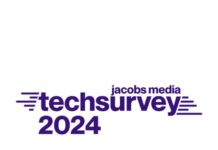
(By Alec Drake) Remember the rental car scene on “Seinfeld” where Jerry shows up to claim his car? The clerk behind the desk politely tells him that they are out of vehicles. Jerry promotes the purpose behind making a reservation and then attempts to educate the clerk on the meaning of a reservation, the holding part being the most important. In media, we reference the reservation as pending business.
The sales team and managers work hard to fill the “reservation” pipeline with pending activity. We also do revenue forecasts using pending dollars to define how the month or quarter will end. Are we missing anything in the take-and-hold aspects of a reservation?
Do We Understand the Purpose of the Reservation?
Peter Drucker said, “Information is data endowed with relevance and purpose. Converting data into Information thus requires knowledge. And knowledge, by definition, is specialized.”
How should we apply our pending knowledge for a more specialized direction on our pricing decisions? The pending evaluation has two steps, the data source reliability and the impact on revenues with any pricing adjustments.
The Data Source or Taking the Reservations
Collecting pending data from your sales team is not a new concept. Several third-party software platforms capture and aggregate the dollars and close percentages to determine a total number. Managers can now see the gap from existing bookings, consider the pending impact, and where they are tracking towards the budget. While the math is simple, the difficult part is sorting out facts from blue-sky projections.
Only by staying close to your team with one-on-one meetings and tracking trends will you determine accurate pending numbers. Getting to a more precise number is essential when converting the pending dollars to inventory pressures, and the conversion enables proactive forecasting to adjust pricing.
How Do You Convert Pending Dollars into Demand?
Many stations may have a robust platform for pending business management to offer feedback on inventory pressure. If so, ensure this capability is fully used and track available reports for proactive rate changes. If you do not have a process to track pending inventory impact, here is a primary starting point for measurement. I have kept the calculations limited to avoid any aggressive moves. The benefit comes from the incremental adjustment of rates faster in the sales cycle, improving yield performance.
- Review historic revenue contributions for high-demand areas. This review could include prime time dayparts only or program blocks of time.
- Capture the total minutes sold for the same dayparts and periods.
- Divide your revenue number by the minutes sold to create a benchmark rate.
- Collect any pending dollars for the upcoming month at 75% or higher-close probability. Using a high percentage close, we also temper big rate moves that may be premature.
- Divide your net pending amount by the benchmark rate from step 3.
- Take the “pending minutes” you calculated from step 5 and add those to your sellout report.
- Adjust rates to reflect the new forecasted sellout.
Takeaway: Comprehensive management of pending activity requires analysis of dollars and the inventory impact for pricing adjustments. In addition, better-pending management shifts inventory management to the sales department (proactive) rather than reports and oversight by the traffic department (reactive). Take the extra step and hold the “reservation” (consider inventory) for a better outcome in the customer experience (less disruption to schedules), and your station’s revenue performance will improve.
Alec Drake is President of Drake Media Group, a revenue management consulting company. You can contact Alec at his website Alecdrake.com, email [email protected] or 214-529-2007.






Yes it is. And the writer is one of a plethora of “consultants” out there, who wrote to patronize radio owners and top management. They are detached from reality.
Drake apparently didn’t the memo…AM/FM is far from a “must buy” these days. Those quaint days of yesteryear are long, long gone.
Drake’s focus on increasing the rates, sounds great to owners. But the hard reality is, you’d damn well better focus on delivering results for the advertisers as your #1 priority. Period. Use unsold inventory to help your clients get better results.
If you doubt at all what I’m saying, just Google KGO Radio. For starters.
This title is pretty offensive.